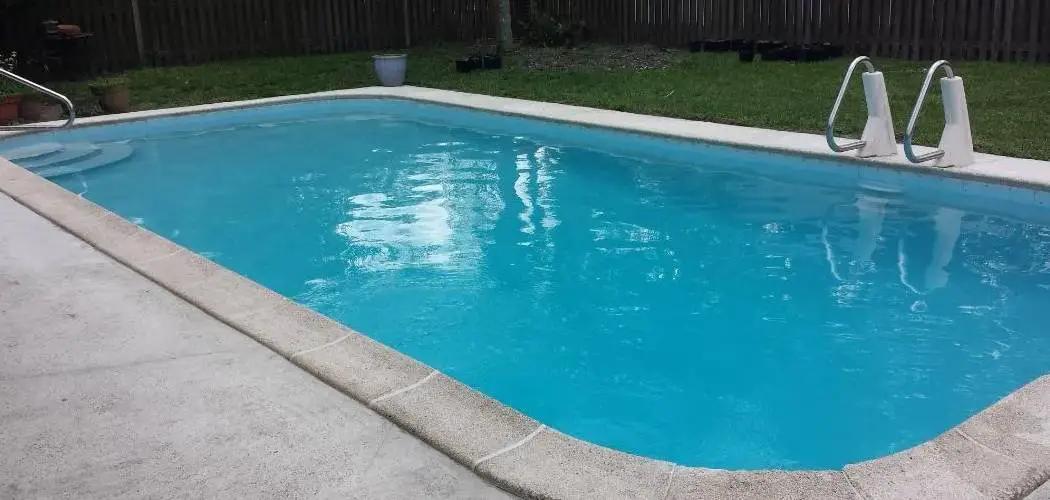Maintaining proper chlorine levels in your pool is essential for ensuring clean and safe water. Chlorine helps to sanitize your pool by eliminating harmful bacteria, algae, and other contaminants. Low chlorine levels can lead to murky water, unpleasant odors, and even health risks for swimmers.
In this guide on how to bring chlorine level up in pool, we will explore effective methods to increase the chlorine levels in your pool, helping you keep the water crystal clear and ready for use.
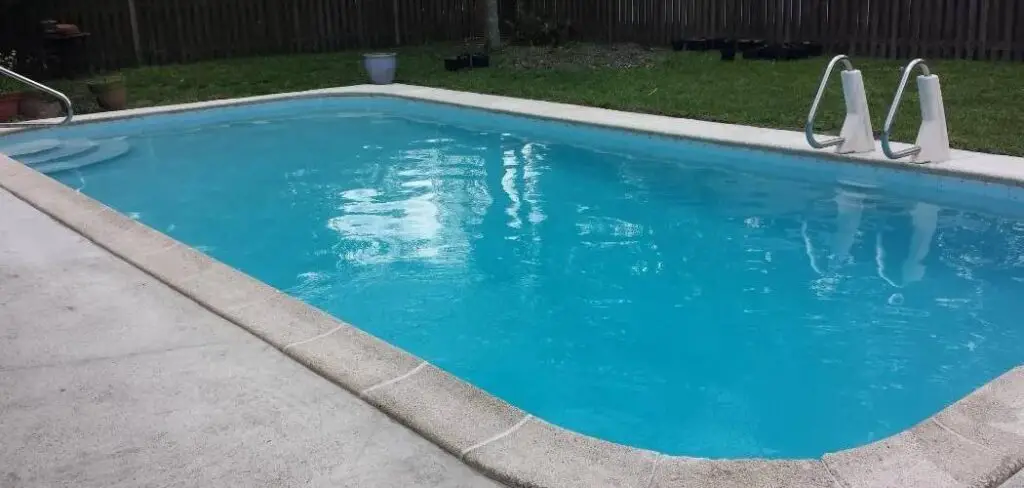
Signs Your Pool Chlorine Is Too Low
Identifying the signs of low chlorine levels is crucial to maintaining a clean and healthy pool environment. Here are some common indicators that your pool’s chlorine levels might be too low:
Cloudy or Murky Water
Low chlorine levels can result in water that appears hazy or murky, indicating insufficient sanitization.
Algae Growth
The presence of green, yellow, or black algae on the pool walls or floor often points to inadequate chlorine levels.
Unpleasant Odors
A strong or unusual smell coming from the pool can suggest a buildup of contaminants due to insufficient chlorine.
Irritated Skin and Eyes
Swimmers may experience red eyes, itchy skin, or irritation, which can sometimes be a result of low chlorine and improper pool chemistry.
Buildup of Debris
Visible dirt or floating particles in the water can indicate that the pool isn’t being effectively sanitized.
Noticing any of these signs should prompt you to test your pool’s chlorine levels immediately and adjust them to the recommended range for safe and enjoyable swimming.
Testing Chlorine Levels
Regularly testing chlorine levels is essential to maintaining a clean and safe swimming environment. To test your pool’s chlorine levels, you can use either test strips, a liquid test kit, or a digital tester. Begin by taking a sample of water from about 18 inches below the surface, as this provides the most accurate representation of your pool’s chemistry.
Follow the instructions provided with your testing kit to determine the chlorine concentration. Ideally, free chlorine levels should fall between 1-3 ppm (parts per million), which ensures effective sanitation without causing harm to swimmers. Testing should be conducted at least twice a week, although more frequent testing may be necessary during periods of heavy pool use or extreme weather conditions. Maintaining a consistent testing routine helps identify imbalances early, allowing for quick adjustments to keep the water safe and inviting.
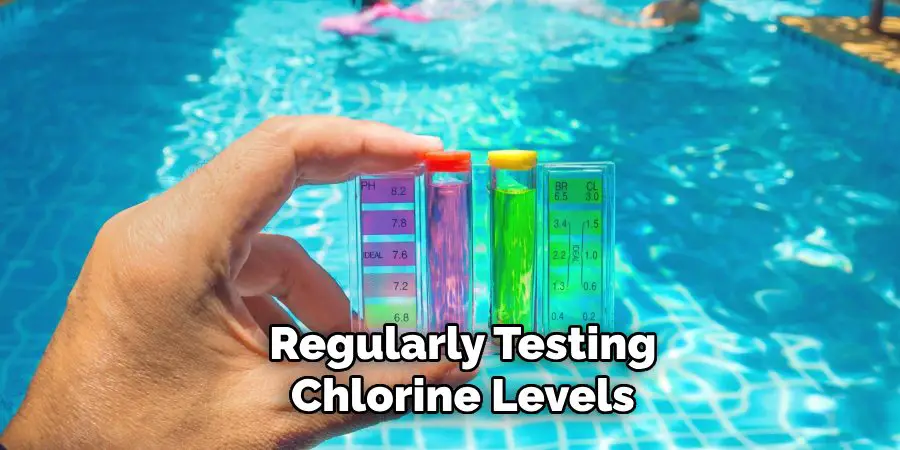
5 Simple Methods on How to Bring Chlorine Level Up in Pool
Method 1: Shocking the Pool
- Shocking refers to adding a large amount of chlorine to the pool all at once, typically around 5 times the normal amount.
- This method is recommended when the chlorine levels are extremely low or if there has been heavy pool usage.
- To shock the pool, follow these steps:
- Dissolve the required amount of shock granules in a bucket of water according to package instructions.
- Slowly pour the solution into the pool while walking around its edge.
- Run your filter for at least 8 hours to circulate and distribute the chlorine evenly.
Method 2: Using Chlorine Tablets
- Chlorine tablets are a popular and convenient way to chlorinate your pool. They are slow-dissolving and provide a steady release of chlorine over time.
- To use chlorine tablets in your pool, follow these steps:
- Place the appropriate number of tablets (based on your pool size) in a floating dispenser or skimmer basket.
- Check the dispenser or basket regularly and add more tablets as needed.
- It is important to monitor the chlorine levels in your pool while using tablets to ensure they stay within the recommended range.
Method 3: Liquid Chlorine
Liquid chlorine, also known as bleach, is another common method for chlorinating pools. It is a cheaper alternative to tablets and granules, but it requires more frequent application.
- To use liquid chlorine in your pool, follow these steps:
- Purchase liquid chlorine from a pool supply store or hardware store.
- Use a measuring cup to determine the appropriate amount of liquid chlorine needed for your pool size. Refer to the label for recommended dosage.
- Pour the liquid chlorine directly into your pool while the pump is running. This will help distribute it evenly throughout the water.
- Allow the pump to run for at least 8 hours after adding liquid chlorine to ensure proper circulation and distribution.
- Test your pool’s chlorine levels again after 24 hours. If it is still not within the recommended range, you may need to add more liquid chlorine.
It is important to note that using too much liquid chlorine can cause harm to swimmers and damage your pool equipment. Always follow instructions carefully and avoid over-chlorination.
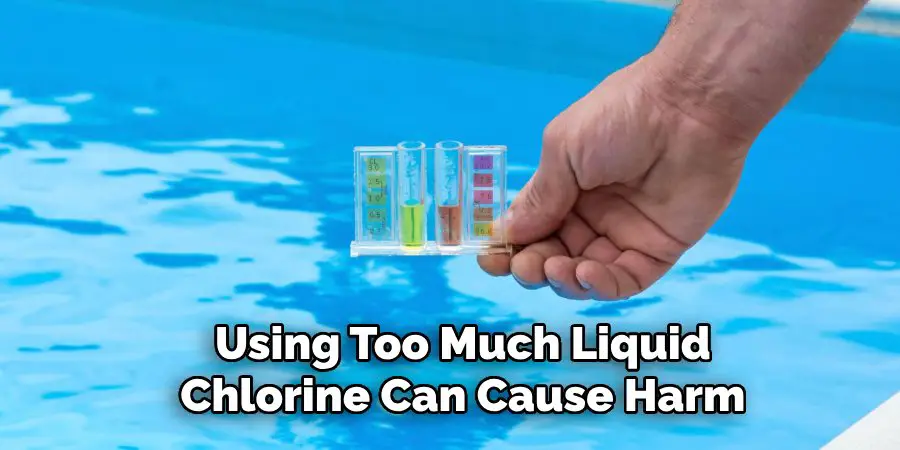
Method 4: Salt Water Chlorination
Saltwater chlorination is a popular alternative to using liquid chlorine in pools. This method uses a saltwater generator, also known as a salt cell, to create chlorine from the dissolved salt in the pool water.
To use this method, you will need:
- A saltwater generator: This can be purchased separately or may come included with some pool systems.
- Pool-grade salt: Different from regular table salt, pool-grade salt does not contain additives and dissolves more easily in water.
- A test kit for checking salinity levels: It is important to regularly check and maintain proper salinity levels when using this method.
Method 5: Liquid Chlorine
Liquid chlorine, also known as sodium hypochlorite, is a popular and effective method for sanitizing pool water. It is available in various concentrations, with common strengths being 10%, 12.5%, and 15%. To use this method, simply pour the recommended amount of liquid chlorine into your pool according to its size and desired chlorine level.
One of the benefits of using liquid chlorine is its quick dissolving time, making it ideal for on-the-spot maintenance or shock treatments. However, it can be more expensive than other methods in the long run.
Following these steps on how to bring chlorine level up in pool can help keep your pool clean and safe for swimming. But proper pool maintenance also involves regularly checking and balancing other chemicals such as pH, alkalinity, and calcium hardness levels. It is important to follow the manufacturer’s instructions and recommended safety precautions when handling any type of pool chemicals.
Preventing Low Chlorine Levels in the Future
To prevent low chlorine levels in the future, it is essential to establish a consistent pool maintenance routine. Regularly test your pool water using appropriate test kits to monitor chlorine levels and other key parameters like pH and alkalinity. Adjust chemical levels promptly to maintain the ideal balance. Ensure proper circulation by running your pool pump for the recommended number of hours each day to evenly distribute chlorine.
Additionally, consider using a pool cover when the pool is not in use to minimize chlorine loss due to sunlight and reduce debris contamination. Regular cleaning of the pool, including skimming, vacuuming, and brushing the walls, can also help prevent the buildup of organic matter that consumes chlorine. By adopting these preventative measures, you can enjoy a clean and safe swimming environment while avoiding the hassle and cost of frequently correcting low chlorine levels.
Frequently Asked Questions
Q: How Often Should I Check and Balance My Pool Chemicals?
A: It is recommended to check and balance your pool chemicals at least once a week, or more frequently during periods of heavy usage or extreme weather conditions. If you notice any changes in water clarity or strong chemical odors, it is best to test the water immediately and adjust accordingly.

Q: What Are the Potential Risks of Not Balancing Pool Chemicals Properly?
A: Not balancing pool chemicals can result in algae growth, cloudy water, skin irritation, and even damage to the pool equipment. It can also affect the efficacy of the sanitizer, potentially leading to harmful bacteria and germs in the pool water.
Q: How Do I Know If My Pool Chemicals Are Out of Balance?
A: Signs that your pool chemicals may be out of balance include cloudy or discolored water, algae growth, strong chlorine smell, skin irritation or red eyes after swimming, and difficulty maintaining a consistent pH level. Regularly testing your pool water can help identify any imbalances.
Q: Can I Use Household Chemicals to Treat My Pool?
A: No, household chemicals are not formulated for use in pools and can be dangerous if mixed with pool chemicals. It is important to always use specifically designed pool chemicals and follow the recommended instructions for safe and effective treatment. Additionally, using household chemicals can void any warranties on your pool equipment.
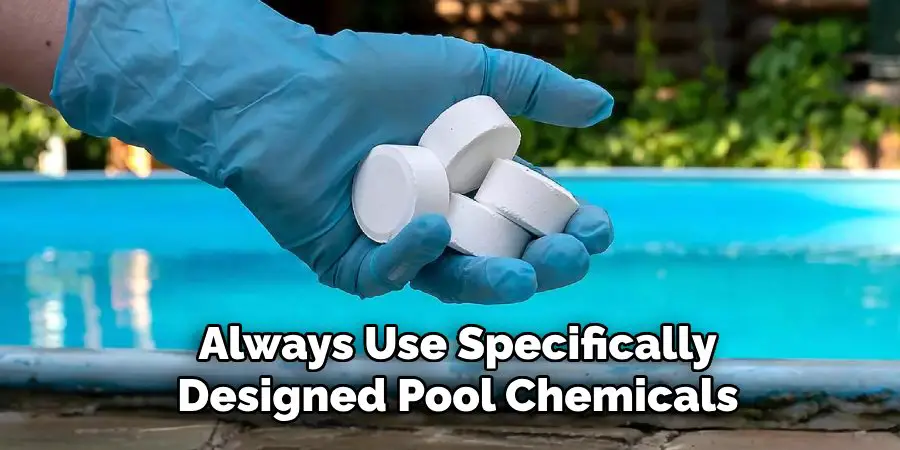
Conclusion
Proper pool maintenance is crucial for ensuring a safe and enjoyable swimming environment. By using the right chemicals, testing your water regularly, and following recommended guidelines on how to bring chlorine level up in pool, you can maintain a clean and balanced pool.
Avoid using household chemicals, as they can be dangerous and potentially damage your pool equipment. With consistent care and attention, your pool will remain a refreshing retreat for you and your family to enjoy throughout the season.
About
Outdoor Fixes is a distinguished figure in the world of Diy design, with a decade of expertise creating innovative and sustainable Diy solutions.
His professional focus lies in merging traditional craftsmanship with modern manufacturing techniques,
fostering designs that are both practical and environmentally conscious. As the author of diy,
outdoorfixes delves into the art and science of outdoorfixes-making, inspiring artisans and industry professionals alike.
Education RMIT University
(Melbourne, Australia) Associate Degree in Design (Outdoor Fixes) Focus on sustainable design, industry-driven projects,
and practical craftsmanship. Gained hands-on experience with traditional and digital manufacturing tools, such as CAD and CNC software.
Nottingham Trent University
(United Kingdom) Bachelor’s in outdoorfixes.com and Product Design (Honors) Specialized in product design with a focus on blending creativity with production
techniques. Participated in industry projects, working with companies like John Lewis and Vitsoe to gain real-world insights.
Publications and Impact
In diy, Outdoor Fixes his insights on indoor design processes, materials, and strategies for efficient production.
His writing bridges the gap between artisan knowledge and modern industry needs, making it a must-read for both budding designers and seasoned professionals.

